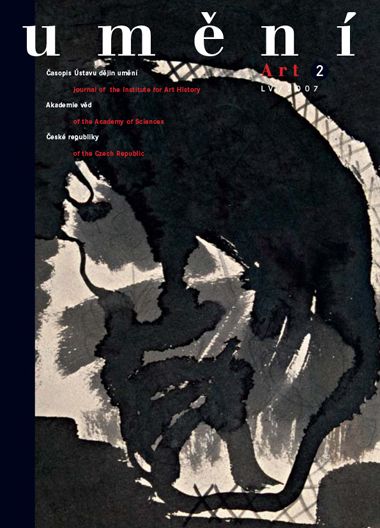Jana Zapletalová
"Fantasioso frescante". Interpretace nástěnných maleb Andrey Lanzaniho ve Slavkově u Brna
Based on archival material-the contract between Andrea Lanzani and Count Kounic for the execution of a series of paintings and the appended sketches with the dimensions and shapes of the areas to be painted on-the first part of this text reconstructs the course of the painting work done at Slavkov Castle, dates it and describes the painter's travels between Slavkov and Vienna. Attention centres mostly, however, on the iconographic interpretation of the entire cycle of Lanzani's murals. The text contravenes previous interpretations of the Marina Dell'Omo paintings as a cycle of profound moral and didactic significance derived from Boethius' De Consolatione Philosophiae. In contrast, it reinterprets the paintings in the context of the sculptural ornamentation of the gardens by Giovanni Giulani and the painted decorations (which have not been preserved) of the garden pavilion as a cycle of paintings celebrating themes of love: an allegory of female beauty, showcasing the power of love along with Fortuna in love bound tightly with the course of nature and its cyclical character, which is to be found in the northern half of the castle wing. At the same time, archival material has newly been made accessible which documents that the literary source used by the painter for the decoration of the garden's 'casino' was the poem 'Avenimenti amorosi di Psiche' by Ercole Udine. Lanzani's manuscript provides a detailed description of the subject matter of the paintings for the garden pavilion and thus points to the existence of a unified conception connecting the paintings and sculptures adorning the gardens of Slavkov Castle on the theme of Amor and Psyche. For this reason, we perceive Slavkov Castle and its decorations from the turn of the 17th and 18th centuries as the Moravian country residence of Count Kounic rather than as his representative palace. This building, with its ornamental programme, was a fulfilment of traditional theory, highlighting decorum in the relationship between the structure's function and its ornamentation according to older treatises, allowing 'tutte le seduzioni della leggiadria e del diletto' for villas and summer residences. In addition, the article furnishes two drawings discovered at the Biblioteca Ambrosiana in Milan which served as preparatory sketches for the Slavkov paintings.
Full-text in the Digital Library of the Czech Academy of Sciences:
https://kramerius.lib.cas.cz/uuid/uuid:99d561a4-314e-4fa6-af99-843ade6e12c1
< back

